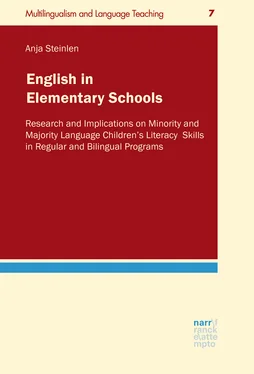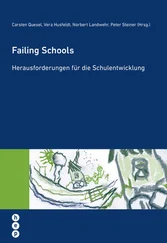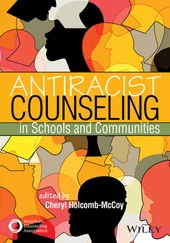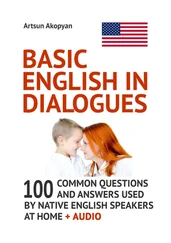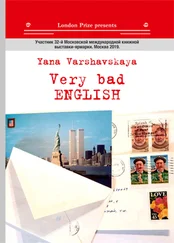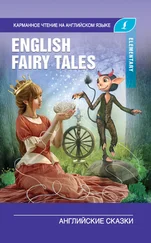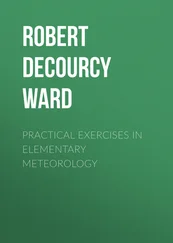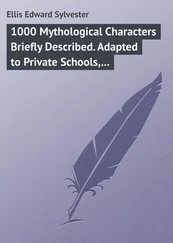2.3.6 Teacher supply for bilingual programs in Germany
In Germany, many teachers in bilingual elementary school programs hold a degree in bilingual teaching (Piske, 2015). According to the KMK (2013b), teachers in such programs (independent of the school form) ideally have obtained a teaching qualification for a content subject (e.g., math, science, geography) and for a modern foreign language (e.g., English, French). Regarding the schools in this study, most teachers at the bilingual program in the Hügelschule in Tübingen (Baden-Württemberg) hold a degree in bilingual teaching (“Europalehramt” at the Pädagogische Hochschulen Freiburg or Karlsruhe) or a degree for English-as-a-subject and for another content subject. However, there are problems with teacher supply due to a lack of training courses in many Federal States. Therefore, it is also possible to teach in a bilingual program with a teaching qualification for a subject and a high level of FL competence, which should at least correspond to C1 (according to the CEFR, European Commission, 2001). For example, the teachers in the Muhlius Schule in Kiel (Schleswig-Holstein) have all spent at least three years or more in an English-speaking country, whereas the teachers at the Platanus Schule in Berlin are either native English speakers or have a high competence in English at the C2 level.
In order to meet the demand for teachers in bilingual programs, the obvious solution is to employ teachers who are trained with a dual subject qualification, holding, for example, joint degrees in English and science for elementary schools. However, even in such cases, teachers are usually not provided with the specific English terminology for the respective subject (e.g., science or mathematics), and they usually do not have any experience in teaching science in the bilingual classroom. Usually, teachers working in schools with bilingual programs have pragmatically developed a certain teaching method of their own, frequently unsystematic, highly personal in style, and yet, just as frequently, highly successful. Still, the need to increase systematic bilingual-oriented teacher training, specifically aimed at the needs of the bilingual classroom (such as the “Europalehramt”), is more than obvious (e.g., Burmeister & Pasternak, 2004; Fischer, 2019; Kersten et al., 2010b; Möller, Fleckenstein, Hohenstein, Preusler, Paulick, Isabell & Baumert, 2018; Tel2L, 2000).
2.3.7 Supply of materials for bilingual programs
Although the KMK (2013b) stated that the Federal States of Germany are responsible for teaching and learning resources for bilingual teaching, it is still a challenge to find appropriate materials for many teachers (e.g., Tel2L, 2000). Although it may be fairly easy to collect authentic teaching materials from the country of the target language, these are in most cases unsuitable for immediate use in the classroom as they are often much too demanding for FL learners in their original language version. Hence the teacher has to adapt the language of authentic materials to the learners’ level of achievement in the FL, which requires extra work. Nevertheless, authentic materials provide the intercultural touch which is also one of the core objectives of bilingual teaching. It therefore remains a delicate balance and is up to the individual judgement of the teacher to assess such authentic materials for use in the bilingual classroom (see also e.g., Böttger & Müller, 2020; Burmeister, 2006; Steiert & Massler, 2011).
So far, only a few coursebooks for elementary school bilingual teaching have been published, because bilingual teaching takes place on a small scale in Germany, and because these bilingual programs vary in intensity and cover different subjects. Teachers may then hesitate to start bilingual teaching due to the limited choice of teaching materials available. This situation calls for universities and centers for teacher training to step in to develop and publish, in co-operation with experienced bilingual teachers, materials that provide an appropriate blending of authenticity and classroom needs for any age group (e.g., Böttger & Müller, 2020; Steiert & Massler, 2010; Tel2L, 2000).
2.3.8 Assessment in bilingual programs
As noted above, CLIL classes follow the regular curriculum of the content subject, and students’ progress is therefore evaluated on a regular basis (KMK, 2013b). However, there is still a lack of official regulations for the assessment of learners’ attainment in CLIL teaching (e.g., Massler & Steiert, 2011). As the CLIL approach is relatively new in the European context, many teachers are insecure about how to assess CLIL learning. According to Massler & Steiert (2011), CLIL assessment differs from regular assessment in several ways because it needs to account for the goals and objectives of two different subjects, including knowledge, competences, skills, attitudes, and behavior, for both language and content. Particularly for the elementary school context, Steiert & Massler (2011) proposed that any assessment of CLIL learning should take into consideration both components – language and content – in an integrated manner (which may differ according to the intensity of the program). Such assessments ideally include the learners’ developmental stage (as there may be a gap between the learners’ cognitive and linguistic competences) and both product and process (i.e., summative and formative assessment). Finally, it is important to make CLIL assessment transparent with respect to the question of which language will be assessed (i.e. the school language or the FL) and how much the FL will count. In some schools, for example, assessments in CLIL subjects are carried out not in the FL (e.g., English) but in the school language (e.g., German), in order to avoid a confound of FL knowledge and subject knowledge (e.g., Tel2L, 2000). More information on assessment, particularly regarding FL reading and writing skills in the bilingual elementary school context, is provided in chapter 7.8.
2.3.9 Studies on L1 and FL reading and writing in bilingual programs
In Germany, bilingual programs have been examined in several large-scale studies focusing on one-way immersion and two-way immersion programs. The MOBI-project (“Monolinguales und bilinguales Lernen”) ran from 2005 to 2009 (e.g., Gebauer et al., 2012, 2013; Kuska, Zaunbauer & Möller, 2010; Zaunbauer & Möller, 2006, 2007, 2010; Zaunbauer, Bonerad & Möller, 2005; Zaunbauer, Gebauer & Möller, 2012, 2013) and involved over 650 elementary school students in Northern Germany attending either bilingual (immersion) programs (where all subjects were taught in English except for German-as-a-subject), i.e. one-way programs, or regular EFL programs (where English was taught as a subject), respectively, from grade 1 onwards. The focus of the MOBI-project was on the development of cognitive skills and language skills, such as German reading and writing, English vocabulary and reading, as well as the development of content knowledge in mathematics and science, which were assessed mainly with standardized tests. In grade 4, the data included around 300 students in immersion programs (e.g. Zaunbauer et al., 2012).
The aim of the second project is to evaluate the two-way immersion programs of the “Staatliche Europa-Schulen Berlin” (SESB, e.g., Möller et al., 2017). Teaching takes place in German and in one of the respective partner languages, i.e., English, French, Greek, Italian, Polish, Portuguese, Russian, Spanish, or Turkish, and half of the teaching time is devoted to one of the two languages. The composition of the classes generally (but not exclusively) consists of 50% of learners with the first language German and of 50% of learners with the respective partner language as L1. The teachers of the subjects taught in the partner language usually speak the partner language as L1. The focus of this project is on the development of reading skills, mathematics and science in German and the partner language. The results are also compared to the development of other students in monolingual programs. Altogether, 789 students in grade 4 participated in this study.
Читать дальше
